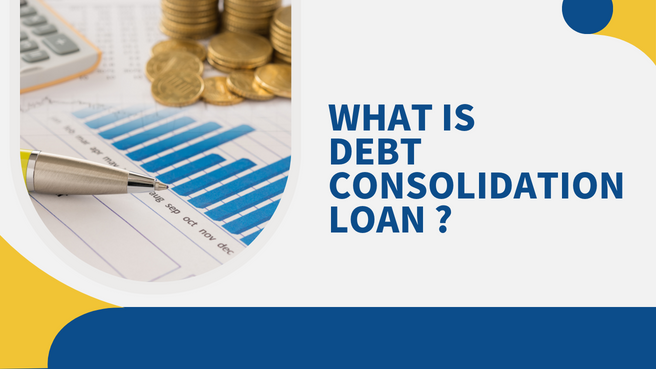As younger Indians take the mantle of the economy, looking for investment options to keep their earnings maximised is a never-ending journey. While there are several options in the market today, many such investments require the individual to have some risk tolerance. While conservative investors are risk-averse, we have a timeless option that is one of India’s favourite wealth boosters. Meant to save capital for rainy days, occasions, and long-term events, a Fixed Deposit (FD) is one of the best alternatives to include in your portfolio. If you’re looking for resources that tell you about the benefits of fixed deposit investments and how to apply online, you’ve arrived at the right place. Follow our article for everything you need to know!
Introduction to FDs
Fixed Deposits (FDs), also known as term deposits or time deposits, are investment instruments offered by banks and financial institutions. In a Fixed Deposit, individuals deposit a certain amount of money for a specific period, which is agreed upon when opening the account. The deposited amount earns a fixed interest rate over the predetermined tenure. Upon maturity, the principal amount and the accrued interest are returned to the depositor.
Importance of Fixed Deposits as a financial instrument
FDs are a popular and secure investment option for individuals seeking stable returns with capital protection. They offer several advantages over other investment avenues, including guaranteed returns, low risk, and flexibility in terms of investment tenure. FDs are suitable for conservative investors looking for a steady source of income and capital preservation.
Benefits and features of Fixed Deposits
- Guaranteed returns: FDs offer a predetermined interest rate, ensuring predictable returns at the end of the tenure.
- Capital protection: The principal amount invested in an FD is protected, and there is no risk of losing the invested amount.
- Flexibility in tenure: FDs offer various tenure options, ranging from a few months to several years, allowing individuals to choose a duration that suits their financial goals.
- Regular income: FDs provide a steady income stream through periodic interest payouts, which can be beneficial for retirees or individuals seeking consistent cash flow.
- Easy to understand: FDs are straightforward and easy to comprehend, making them accessible to a wide range of investors.
- Low risk: Compared to other investment options such as stocks or Mutual Funds(MFs), FDs carry minimal risk, making them suitable for risk-averse individuals.
Understanding How FDs Work
FDs involve depositing a specific amount of money with a bank or financial institution for a predetermined period. The deposited amount is held by the institution, and in return, the depositor earns interest on the investment. The interest rate is fixed when the account is opened and remains constant throughout the tenure.
Calculation of interest and returns on FDs
The interest on fixed deposits is calculated using the following formula:
Interest = (Principal Amount × Interest Rate × Tenure) / (365 or 366, depending on the year).
The total maturity amount is calculated by adding the interest earned to the principal amount. The interest can also be paid out at regular intervals (monthly, quarterly, half-yearly) or upon maturity, depending on the depositor’s preference.
Different types of Fixed Deposit schemes are available
- Regular FDs: The most common type of FDs, offering a fixed interest rate and tenure.
- Senior citizen FDs: Exclusive schemes for senior citizens, offering higher interest rates.
- Tax-saving FDs: FDs with a lock-in period of five years that offer tax benefits under Section 80C of the Income Tax Act.
- Flexi or sweep-in FDs: FDs linked to savings or current accounts, allowing individuals to earn higher interest on idle funds.
- Cumulative FDs: FDs where the interest is compounded and paid along with the principal amount upon maturity.
How to Apply for an FD Online
- Selecting a reputable bank or financial institution: Research a reliable bank or financial institution offering online Fixed Deposit services. Consider factors such as reputation, interest rates, customer service, and online banking features.
- Researching the available FD options: Explore the various FD plans provided by the selected bank. Check the interest rates, tenure options, and any special features or benefits associated with the different types of FDs.
- Checking eligibility criteria and documentation requirements: Review the eligibility metrics set by the bank for opening a Fixed Deposit account. Ensure you meet the minimum age requirements and have the necessary identification and address proof documents, such as a PAN card, Aadhaar card, passport, etc.
- Accessing the bank’s online platform or mobile application: Ensure that the platform is secure and reliable, with proper encryption and authentication measures in place.
- Navigating the online application process: Locate the section for opening an account within the online banking portal or mobile app. Follow the prompts and instructions provided to begin the application process.
- Uploading necessary documents and information: Scan or take clear photos of the required documents, such as identification and address proof. Upload these documents securely through the online platform per the bank’s instructions.
- Reviewing and confirming the application details: Verify all the information entered during the application process, including the deposit amount, tenure, and interest rate. Ensure the details are accurate and match your investment preferences.
- Making the deposit and receiving confirmation: Transfer the desired amount from your linked accounts to the FD account. Once the transaction is completed, you will receive an online confirmation or receipt indicating the successful opening of your Fixed Deposit account.
Tips for Maximising the Benefits of FDs
- Consideration of investment goals and time horizon: Align the tenure of your FDs with your financial objectives, whether short-term goals or long-term wealth accumulation.
- Comparing interest rates and terms offered by different banks: Choose the bank that provides competitive rates and favorable terms to maximise your returns.
- Diversifying FDs across multiple banks: Spread the risk and ensure a broader coverage of deposit insurance. This strategy can provide stability and protect your funds in unforeseen circumstances.
- Understanding premature withdrawal and renewal options: Understanding and exploring the renewal options available to extend the tenure of your FD if desired.
- Setting up automatic renewal or interest crediting instructions: Opt for automated standing instructions to ensure a hassle-free experience. This allows your FDs to be automatically renewed at maturity or has the interest credited directly to your linked account.
- Monitoring and managing the FD portfolio: Keep track of maturity dates, interest payments, and any changes in the market rates. Stay informed about the latest developments and options to make informed decisions about your investments.
Wrapping Up:
Now that you have learned all there is to learn about Fixed Deposits, you can start your online application process. If you have any concerns, make sure to reach out to the bank’s customer care or relationship manager for quick resolutions. We hope you found our article helpful. Stay tuned for more.



